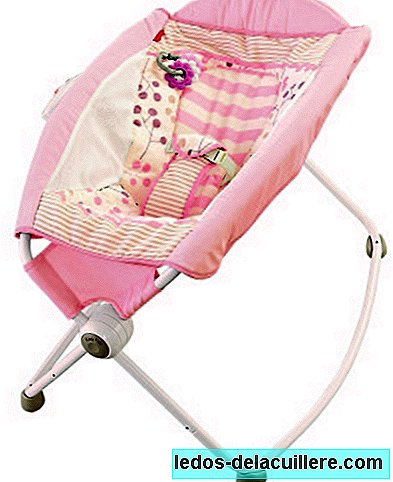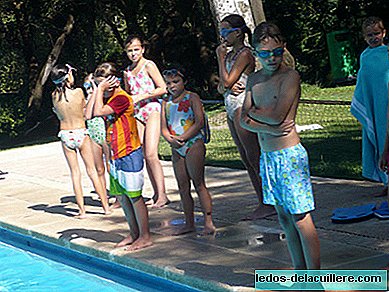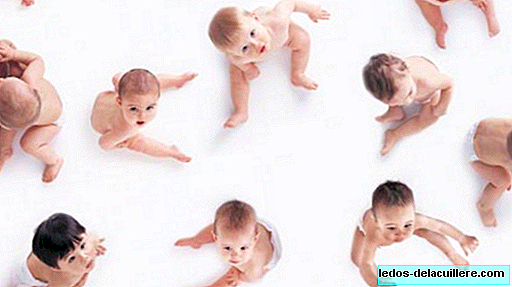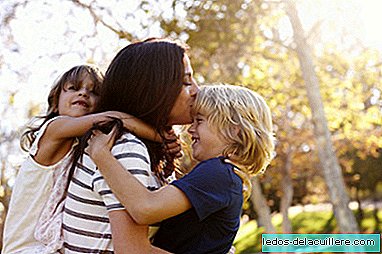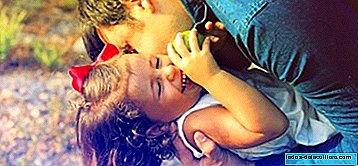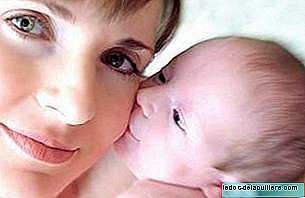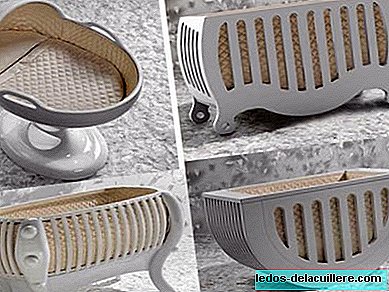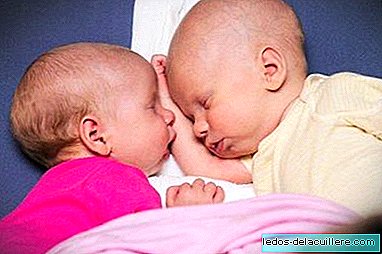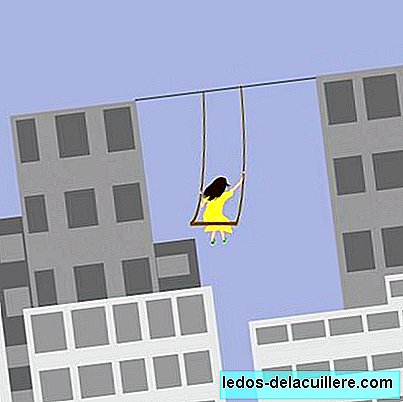When we go on a trip or walk with our children, it is very important that they always sit in a child restraint system suitable for their size and weight. However, it is also important to remember that Although these chairs are the best to protect them, we should not exceed the time they sit in them or use them for another purpose., particularly in the case of babies.
Now, after concluding a 10-year study on this topic, The American Academy of Pediatrics (AAP) warns again about the risk of letting babies sleep in the car seat and share the recommendations for proper use of these devices.
The risk of postural or positional asphyxiation
For several years, various studies have been published about postural or positional asphyxiation, which is what happens when babies fall asleep in a position that makes breathing difficult, because they are not yet able to support themselves and remain seated.
 In Babies and more Postural or positional asphyxiation: why babies should not sleep in car seats
In Babies and more Postural or positional asphyxiation: why babies should not sleep in car seatsDue to the shape of the car seats, your body flexes on itself by the force of gravity, adopting a "C" shape, making it difficult for them to expand the chest and abdomen to breathe properly. If they remain for a long time in that position, the risk of suffocation is very large and can result in the death of the baby.
Although child restraint systems have been designed to protect babies only during transportation, many parents use them wrongly, as an alternative to the crib to sleep the baby, despite the fact that for years it has been said that babies should always sleep on their backs and on a flat and firm surface, with nothing around them.
The study
Through a statement, the AAP reports on its new study published in the journal Pediatrics, which lasted 10 years and analyzed the deaths of 11,779 babies related to sleep, finding that 348 of them had happened on seating devices, among which the car seats stood out.
According to their research, more than 90% of the time, these devices were not being used as recommended and the average age of the babies who had died in them was two months.
For their investigation, they divided the products or devices for babies into two categories, one of devices whose purpose was to keep the baby sitting and another where they did not remain in that position. Inside the seating devices they included car seats, strollers, jumpers, swings and other types of baby seats. In the second group were the cribs and bassinet.
It was found that the majority of deaths occurred in seating devices they had happened at home and under the care or supervision of one of the parents, although when compared to deaths in other places where babies were not sitting, it was more common for this to happen when they were in charge of someone else, such as a babysitter or a relative.
 In Babies and more, they almost lost their baby due to postural asphyxiation: beware of prolonged use of car seats!
In Babies and more, they almost lost their baby due to postural asphyxiation: beware of prolonged use of car seats!Within its statement, the AAP mentions the recent case of the rocking hammock that turned out to be dangerous due to the risk of suffocation, after they found that there had been more than 30 deaths related to its use. In some cases, the babies turned, while in others, the position in which they were difficult to breathe.
Dr. Jeffrey D. Colvin, co-author of the study mentions something that parents should not confuse: "Although car seats are the best place for babies while they are transported in a vehicle, that does not mean they are the safest place when they sleep outside the car", and recommends wearing a bassinet or mini-cradle for the baby to sleep when they reach their destination.
AAP recommendations for a safe rest

These recent events and the results of the study once again make it necessary to remind and alert parents about the correct use of car seats, as well as the AAP recommendations on when resting babies and using sleep products:
- The babies they should not sleep or be placed to sleep in an inclined position. By having his head elevated, the baby is in a position that can suffocate him.
- The AAP does not recommend any sleep products that require tying or holding the baby, especially if the product rocks, as the straps could strangle it.
They also mention that it is of the utmost importance to educate not only the parents, but also the whole family and the caregivers or babysitters who are going to take care of babies about the recommendations for a safe sleep, among which the following stand out:
- Lay the baby down on his back on a firm and flat surface like a bassinet or a crib with an adjustable sheet.
- The mattress on which the baby sleeps should be hard, resistant and breathable, preventing it from sinking into it. Your measurements should be appropriate to the crib, since a small mattress can leave gaps.
- Avoid using pillows and bedding as protectors for crib bars, blankets, blankets, cushions and soft toys, such as stuffed animals. The crib must be totally free.
- Avoid products and inventions that promise to reduce the risk of sudden death such as roll cushions or positioners.
Finally, remember that although the car seats are the safest when traveling, Nor does it mean that babies should stay in them all the time for long trips., because the recommended time to stay in them is 30 minutes to an hour and a half maximum.
 In Babies and more Why babies can not be more than an hour and a half in the car seat
In Babies and more Why babies can not be more than an hour and a half in the car seatIf we make long trips, we must make frequent stops between 15 and 20 minutes, in which the baby must be removed from his chair to allow it to stretch, change position and oxygenate. And finally remember the most important rule: car seats should only be used inside the car and for the purpose for which they were designed.
Photos | iStock
Via | Red tricycle


